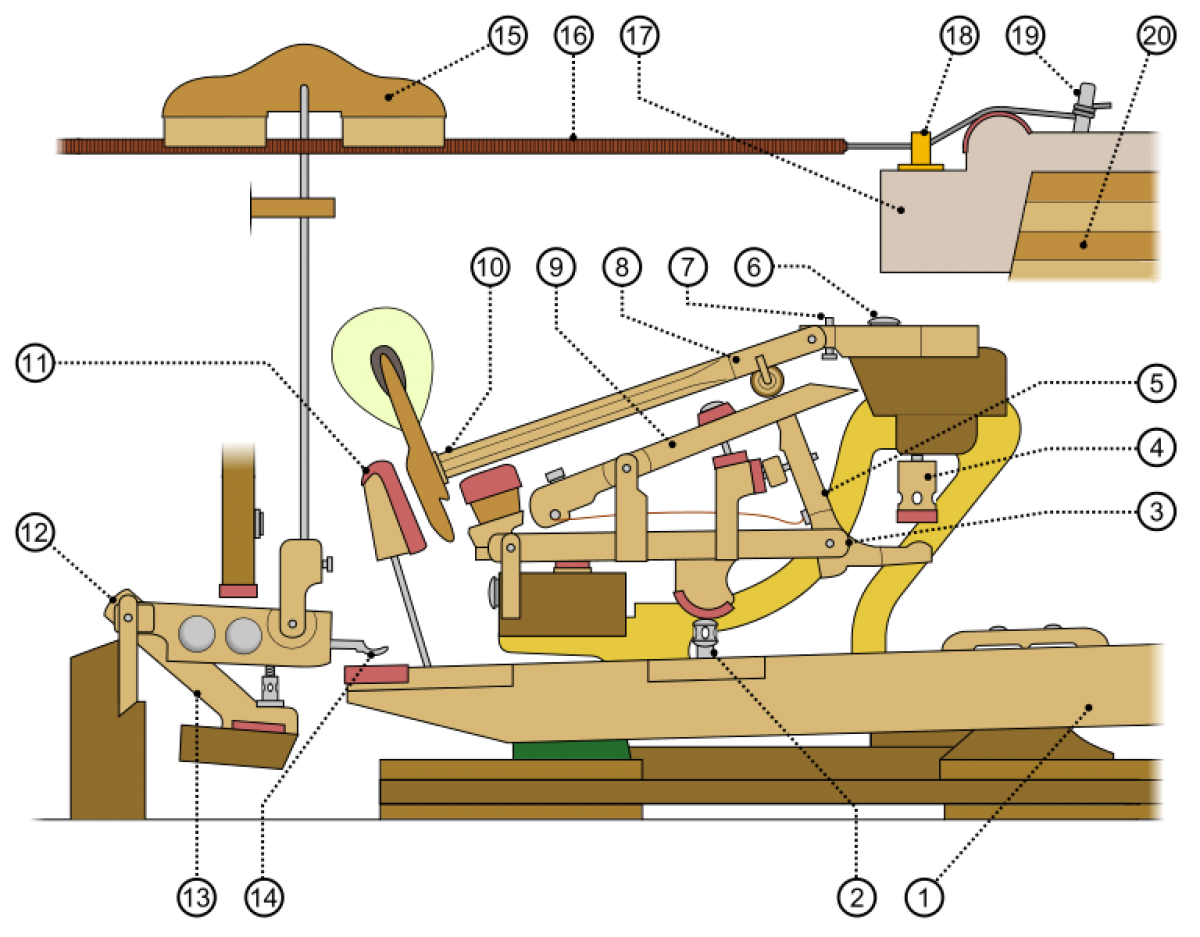Piano Action Regulating is a service frequently requested by teachers, advanced students, and professional pianists. It involves precise measurements and adjustment of the piano’s action mechanism – and makes an enormous difference in the ‘playability’ of the instrument.
There are several thousand parts in a piano’s action which must work flawlessly together. Since these parts are constructed of wood, metal, wool, and leather, they are subject to wear-and-tear. This factor, along with loosening of screws as a result of playing the instrument, are largely responsible for the piano action going out of regulation.
As you play the piano’s keys, a complex system of levers, springs, and hammers is activated, which then results in the hammers striking the strings to produce tone. The mechanical part of the piano which produces the tone is called the piano’s “action”. Many of the action parts are designed to be adjusted to tolerances of a few hundredth’s of an inch. However, as these parts wear, compress, or simply undergo dimensional changes due to changes in humidity and temperature, the action mechanism doesn’t function in an optimal manner. The experienced pianist notices this in the form of sluggish keys, loss of “touch sensitivity”, and greater effort to produce the desired musical ideas.
“Action regulation” refers to the precise adjustment of the various action components to compensate for these changes. Since actions vary by manufacturer, it is important to re-establish the proper tolerances for your particular piano, so that it will respond as it should. How often this needs to be done depends on the amount of use the piano gets, and the temperature and humidity conditions to which the piano is subjected.
How will you know if your piano needs regulating? When you have your piano tuned regularly, your technician will alert you to the need for action regulation. Some of the more obvious symptoms that you’ll notice include:
- Keys that are not level with each other
- Uneven touch, or too-heavy touch
- Sticking keys
- Sluggish response
- Difficulty in to executing trills and other rapid musical passages
- Lack of sensitivity to touch
- Decreased dynamic range
- Excessive key travel to produce tones, also called “lost motion” – (excessive movement of the key before the hammer is activated to strike the keys)
In some cases, parts that are excessively worn will need to be replaced or reconditioned before regulating can begin.
